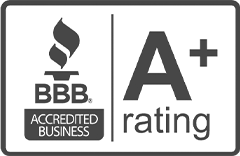It seems that with enough practice, just about anyone can learn how to drive a car. All cars are made fairly similar in that they have a steering wheel, a gas and brake pedal, and a gear shifter to switch between drive, neutral, and reverse – so their frequent use becomes second nature. But what about the less common driving tasks that you are expected to know, like changing a tire and checking your tire pressure? Its important to know a little more than what you learned in Drivers’ Ed, so here are a few essentials that every driver should know how to do.
Change A Tire
Luckily it doesn’t happen very often, but you never know when a tire is going to blow. If it does happen, don’t just pull over on the side of the freeway – that could end up even more dangerous. Slow down, put your hazards on, and try to find a level surface where it is safe to park and put your emergency brake on to avoid risk of rolling. Get the spare tire, a lug wrench, and a jack (look in the car’s manual if you don’t know where these are located) and jack your car up at the point closest to the popped wheel. Then, remove the hubcap, lug nuts, tire and wheel. You can now put the spare on, tighten the lug nuts, and lower the car back down to the ground.
Check Your Oil
First, open the hood and find the oil dipstick (its location is usually listed in the manual if you do not already know) and wipe off any old oil that is still on the shaft of the dipstick. Insert the stick as far as you can and then pull it back out. Look at the bottom of the stick to see markings that indicate what oil levels are sufficient. If the oil line is below the markings, add half a quart of oil at a time until you have reached the proper level.
Check Your Tire Pressure
This is easy. When the car and tires are cool, take the gauge out of each of the four tires and remove the valve cap. Then, all you have to do is press the gauge against the valve and it will read the pressure. The suggested or proper tire pressure is often listen in the car manual.
Jump-Start A Car
Once both cars are turned off, attach a red clamp to the positive terminal on the dead battery and attach the other red end to the positive terminal of the battery in the other car. Do the same with the black clamp to the negative terminal on the good battery while connecting the other black clamp to and unpainted steel surface on the dead car. Start the engine of the working car and then the engine of the stalled car. Assuming this worked, remove the cables in the opposite order you attached them.
Get Unstuck
If your car gets stuck in the snow or mud, don’t freak out. If you’re stuck in snow, get out and evaluate how stuck you are. If its deep, you may have to do a little digging first, but if just the tires are blocked you shouldn’t need to. Try to “rock” the car back and forth by switching between drive and reverse and going as far as you can in each direction, but stay light on the gas. Sometimes turning the steering wheel all the way one way then back the other can clear some space around your tires as well. If you’re stuck in the mud, don’t spin the tires. Put something in the path of the tires like towels, branches, anything and try to drive over them slowly.
Courtesy of Car and Driver


